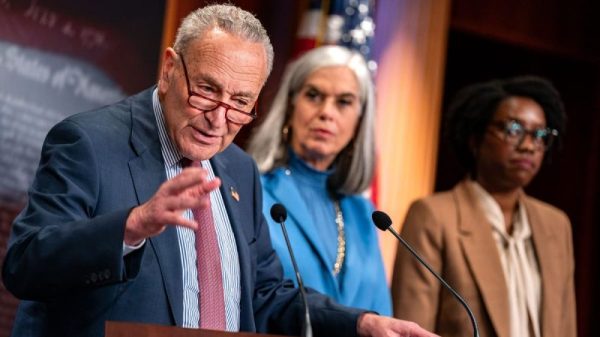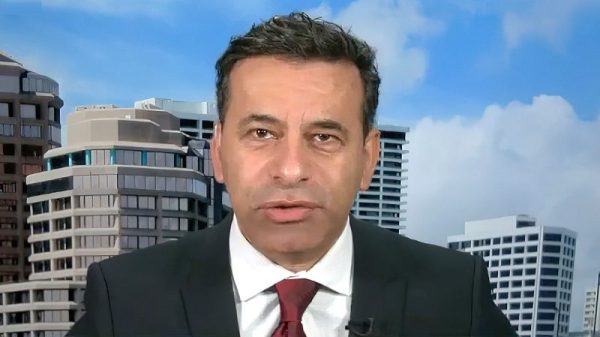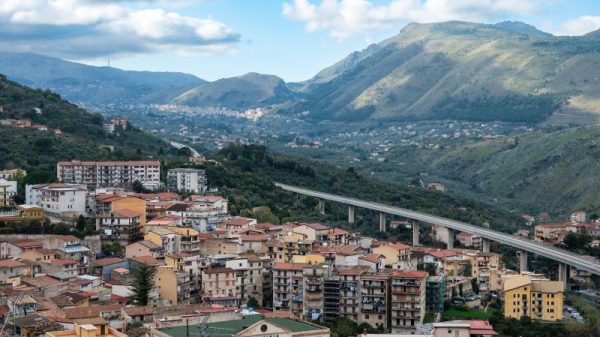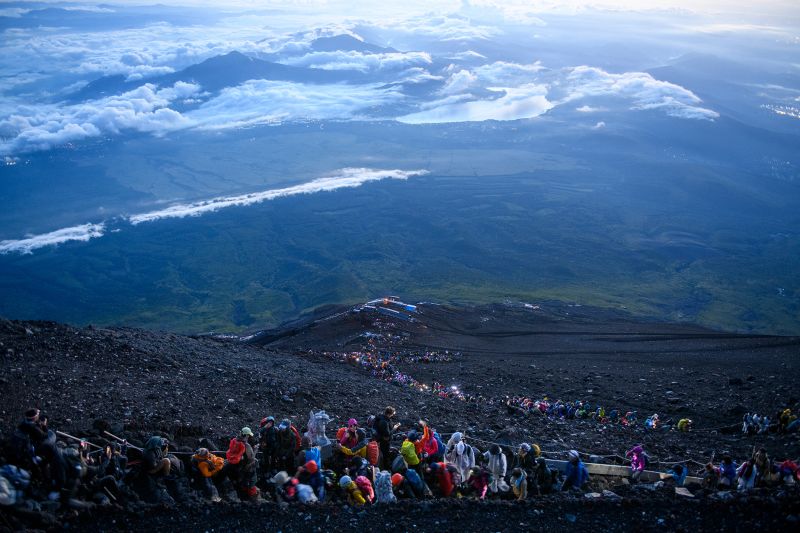They are scenes few would associate with Japan’s highest peak: human traffic jams, foothills littered with garbage and inappropriately attired hikers – some attempting the ascent in sandals.
But these sights are all too familiar for Miho Sakurai, a veteran ranger who has patrolled the slopes of Mount Fuji for the past seven years.
When Mount Fuji was added to the list of UNESCO World Heritage sites in 2013, the International Council on Monuments and Sites (ICOMOS), UNESCO’s advisory organ, urged mountain officials to manage the crowds.
However, the number of visitors to the mountain’s popular fifth hiking station has more than doubled from two million in 2012 to over five million visitors in 2019, according to the Yamanashi prefectural government.
And since the annual climbing season opened just a couple of months ago in July, around 65,000 hikers have reached the summit, an increase of 17% from 2019.
Officials say a post-Covid tourism boom has brought thousands more to the mountain, which straddles Japan’s Yamanashi and Shizuoka prefectures. And as Mount Fuji marks the 10th anniversary of its UNESCO designation this year, they fear the environmental situation has reached a “critical point.”
“Overtourism – and all the subsequent consequences like rubbish, rising CO2 emissions and reckless hikers – is the biggest problem facing Mount Fuji,” says Masatake Izumi, a Yamanashi prefectural government official and expert on the famed peak.
‘Like Disneyland’
Of Mount Fuji’s 10 hiking stations, the fifth (called “Gogome”) is located roughly halfway up the 3,776-meter (12,388-foot) mountain. It receives 90% of the mountain’s visitors, most whom take buses, taxis and EV cars from Tokyo along the Fuji Subaru Line mountain road, says Izumi.
“Built almost 60 years ago amid Japan’s era of motorization, the Fuji Subaru Line gave visitors and families direct access to a point halfway up the mountain. It allowed people across the country to experience Mount Fuji,” says Izumi.
Nowadays, when hikers head to the fifth station from Tokyo on that line, they’ll hear a folk song play briefly as their vehicle passes a set of sensors on the road.
Written by Sazanami Iwaya in 1911, “Fuji no Yama” or “The Mountain of Fuji” celebrates the popular tourist destination. The lyrics highlight Mount Fuji’s grandeur, calling it “Japan’s greatest mountain” as it “pokes its head above the clouds” while “clad in a kimono of snow.”
These lyrics are a stark contrast to the reality on the ground, with experts saying the mountaineering experience at Mount Fuji is in sharp decline because of the crowds.
Izumi, the Yamanashi official, says visitors can no longer take private cars up to the fifth station unless they are fully electric, but that has resulted in more buses ferrying large groups of visitors to the station.
The hordes of hikers are also putting the mountain’s limited toilet facilities and four medical stations under increasing pressure, he adds.
At the busy fifth station, as busloads of hikers swarm toward the Yoshida trail – the most popular of the mountain’s four routes – Tomoyo Takahashi, a Mount Fuji conservation fund employee, urges them to donate 1,000 yen ($7) to keep the mountain clean.
Unruly hiking
The mountaineering experience is particularly in decline for more seasoned hikers, according to Kiyotatsu Yamamoto, a national parks and Mount Fuji specialist at the University of Tokyo.
“Congestion and traffic jams on the mountain trails are a major source of dissatisfaction among climbers, as hikers who want to see the sunrise all amass near the summit, and it takes them four hours to climb a section that used to be climbed in two hours,” he says.
Vito Fung Yiu Ting, a hiker from Hong Kong, says he booked a night in a mountain lodge at least three months before visiting Fuji.
But not everyone plans well in advance. The risk of altitude sickness and hypothermia, for instance, has increased because of a trend called “bullet climbing,” in which hikers begin their ascent at night, pushing on until dawn, without staying in a mountain lodge to acclimatize their bodies to the air pressure, says Sakurai, the Mount Fuji ranger.
Yamamoto adds that some inexperienced hikers even sleep in the washrooms to keep warm, throw away climbing gear on the trail or camp in prohibited zones.
From ‘quantity to quality’ tourism
Over the years, countermeasures have been taken to protect Mount Fuji.
For instance, volunteers from the Fujisan Club, a non-profit organization dedicated to conserving Mount Fuji, have carried out 992 clean-up activities at the foothills of the peak, with 74,215 participants collecting 850 tonnes of garbage between 2004 and 2018.
Last year, the group started carrying out garbage patrols with electric bikes equipped with cameras that capture GPS data and create maps that chart the types and quantities of rubbish in an area.
To improve the visitor experience, officials capped the number of climbers to 4,000 per day for the popular Yoshida trail, says Yamamoto, the national parks specialist.
However, in practice, sticking to this target is a challenging feat.
Unlike in the US, national parks and World Heritage sites in Japan do not have gates keeping visitors out. Blocking roads to hikers requires laws and local government bylaws, meaning progress on this front is slow, he says.
Yamamoto has proposed establishing a system whereby only visitors who had booked a parking space or climbers who had made bookings at one of the nine lodges gain permission to hike Mount Fuji.
Meanwhile, Izumi says the local government wants to radically change how people access the mountain.
Possible options include building a light rail transit system on top of the Fuji Subaru Line road, preventing cars and buses from traveling along its path to the fifth station.
Izumi feels crowd control will be easier when people have to buy train tickets and the local government sets departure and arrival times. He has also proposed organizing lectures on the trains, in which people learn about Mount Fuji and how to climb the mountain correctly.
“Fuji-san is screaming out in pain. We can’t just wait for improvement; we need to tackle overtourism now,” he says.







































